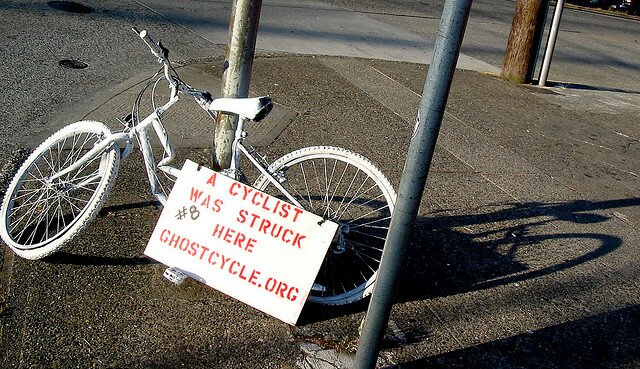
When the Seattle Times calls Mayor Mike McGinn, sneeringly, “Mayor McSchwinn,” for his support of bicycling and bicyclist safety efforts, you may or may not laugh. You may want to point out that the road-diet-plus-bike-lane combination was implemented heavily by the mayor the Times lauds for his farsightedness.
When an ideologically stoked backlash to road diets appeared this time last year Seattle’s department of transportation argued they’d been doing road rechannelizations since 1972. But certainly the road diet as we know it got a boost lately from the Bridging the Gap levy, as SDOT recounts:
In 2007, SDOT worked with the Mayor and City Council to codify the Complete Streets policy in ordinance number 122386, which states that “SDOT will plan for, design and construct all new City transportation improvement projects to provide appropriate accommodation for pedestrians, bicyclists, transit riders, and persons of all abilities, while promoting safe operation for all users.”
In 2007, of course, Seattle’s mayor was Greg Nickels.
But you may also feel pained at the Seattle Times‘ callousness. Bike safety is a serious thing: life and death, in fact. Seattle has thousands of daily bike commuters, the Seattle Times editorial board aside, and bike infrastructure and bike safety mean a great deal to them.
The Times opinionators can apparently shrug a death or two off, if it means they get to make fun of a mayor they dislike. To The Economist cycling deaths made Seattle stand out. When they went looking for an example of the dangers of cycling in the U.S., they picked Seattle as the Goofus:
Nearly 6% of commuters bike to work in Portland, the highest proportion in America. But in five out of the past ten years there have been no cycling deaths there. In the nearby Seattle area, where cycling is popular but traffic calming is not, three cyclists, have been killed in the past few weeks.
The Seattle Times covered cyclist Mike Wang’s death, which happened a few blocks from Seattle Times offices. Then Ron Judd went on to mock Mayor McSchwinn a few more times. Being “for” bicycling is funny. It’s not as if there’s a real problem.
Here’s The Economist again:
…consider the death of Michael Wang. He was pedalling home from work in Seattle on a sunny weekday afternoon in late July when, witnesses say, a brown SUV made a left turn, crunched into Wang and sped away.
The road where the 44-year-old father of two was hit is the busiest cycling corridor in Seattle, and it has clearly marked bicycle lanes. But the lanes are protected from motor vehicles by a line of white paint—a largely metaphorical barrier that many drivers ignore and police do not vigorously enforce.
Well, economists have no sense of humor. One of the motivations behind SDOT’s complete streets is an attempt at what The Economist recommends: traffic calming. SDOT has simply been trying to get drivers to obey the speed limit on boulevards and arterials. The Economist writes approvingly of a 20-mph limit where cars are near bicycles, “a speed that, in case of collision, kills less than 5%.”
I imagine that’s cold comfort to anyone in that five percent, but at just 30 mph, the fatality rate (for cyclists and pedestrians) has skyrocketed to around 45 percent. Optimally, I believe, you wouldn’t have bicycles in contact with cars in a hurry: see Portland’s bike boulevards. (If you have an oft-ignored “Slow: Children Playing” sign on your street, why not talk to the City Council’s Sally Bagshaw about a pilot program?)
But no matter how you look at it, I think it’s time to stop ignoring the fact that there are lives on the line in this discussion. Reasonable people stop sniggering when people are dead.